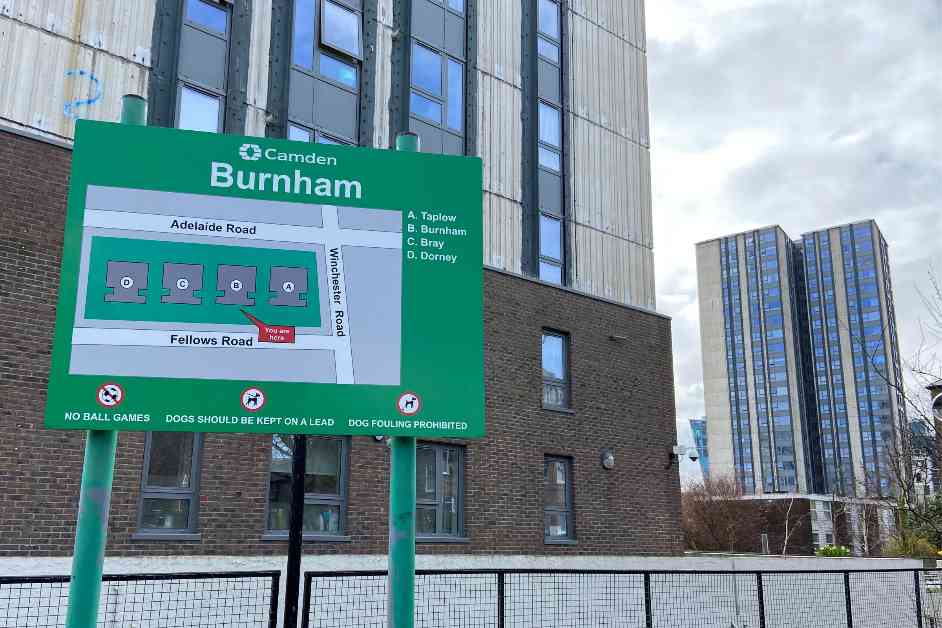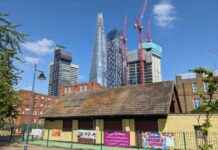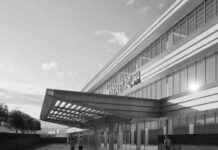Camden Council’s Chalcots Estate inquiry, which has recently entered its second phase, has been met with skepticism from campaigners following a two-year delay in its progression. The inquiry was initially launched in response to concerns about the safety of residents living in the tower blocks on the Belsize Park estate. However, the process was put on hold without any official announcement, leaving residents in the dark about its status.
Phase One Evacuation
Nine days after the tragic Grenfell Tower fire in 2017, hundreds of households in the Chalcots tower blocks near Swiss Cottage were evacuated due to safety concerns. Fire inspectors had deemed the buildings unsafe due to various fire hazards, including flammable cladding, inadequate fire stopping, faulty fire doors, and exposed gas pipes. The evacuation prompted an investigation into the decision-making process that led to such dire conditions in the buildings.
Phase one of the inquiry focused on the evacuation itself, examining the circumstances that necessitated such drastic action. However, phase two was intended to delve deeper into the root causes of the safety defects that plagued the estate, particularly in relation to a £150 million refurbishment that took place nine years prior. This phase aimed to shed light on how the estate had been left vulnerable to fire hazards despite the extensive renovation efforts.
Delays and Excuses
Despite promises from council leaders to pursue the second phase of the inquiry, progress was stalled for two years, leading to concerns among residents and campaigners. The council initially cited the ongoing Grenfell Inquiry as a reason for delaying the Chalcots Estate investigation. However, many questioned the validity of this excuse, arguing that the issues at Chalcots were distinct from those at Grenfell and should have been addressed independently.
Hasan Shah, a tenant representative for the Burnham block, expressed skepticism about the council’s motives, suggesting that the intervention of the press had prompted officials to resume the inquiry. He highlighted the lack of transparency and accountability in the council’s handling of the situation, noting that residents had been left in limbo for far too long.
Former Belsize Park councillor Steve Adams, now leading Camden’s Conservative group, also raised concerns about the delay and questioned the council’s decision-making process. As someone with experience in the construction industry, Adams criticized the council’s approach to scoping the inquiry, suggesting that crucial aspects of the investigation had been overlooked or mismanaged.
Resuming the Inquiry
Following mounting pressure from residents and campaigners, Camden Council finally announced the resumption of the inquiry’s second phase under the leadership of new council leader Richard Olszewski. In a press release, Olszewski stated that the completion of the Grenfell report had paved the way for the council to proceed with scoping the next stage of the review.
Nigel Rumble, a tenant representative for the Bray block, expressed optimism about the inquiry’s revival and emphasized the importance of thorough investigation into all aspects of the refurbishment process. Rumble stressed the need for transparency and accountability in determining who was responsible for the safety failures that endangered residents of the Chalcots Estate.
As the inquiry enters its second phase, residents and campaigners remain vigilant in ensuring that the investigation is conducted with integrity and diligence. The Chalcots Estate inquiry serves as a critical examination of the systemic failures that led to the endangerment of residents’ lives, and its outcome will have far-reaching implications for future safety measures in Camden and beyond.





















